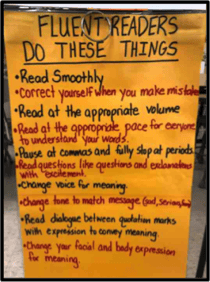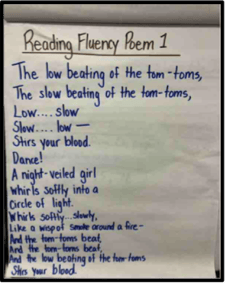At the start of each school year, we welcome a new group of students into our classrooms, but more importantly, we welcome them into our hearts. As the year progresses, we find ourselves growing closer. We find ourselves sitting at home with our loved ones worrying over student progress and planning what we can do next to help our students become masters of the grade-level standards we are responsible for.
As teachers of literacy, this recurring problem is the result of three likely culprits: Vocabulary, Knowledge, or Fluency. Let’s take a closer look at the last of these.
Fluency is the door to vocabulary acquisition and the development of core knowledge. If students are fluent, they are able to read more texts and take in more knowledge while simultaneously building vocabulary. When students in our classroom struggle with fluency, this creates a rippling effect throughout other areas. This is because fluency does not guarantee comprehension, but the lack of fluency does guarantee the lack of comprehension. (David Liben, Source 1)
Fluency is the door to vocabulary acquisition and the development of core knowledge.
We can identify fluency issues from hearing our students read a passage on grade level while we measure the words correct per minute (WCPM) and prosody (tone, expression, etc.) I compare my students to the national fluency norms from Hasbrouck and Tindal. Once I am aware of where my students compare, I make a note of their prosody. From this, I have my baseline data and can start working with students to see their fluency increase. It is my research-based philosophy that students need to use complex text to build fluency rather than leveled or lower leveled texts. There is also a wealth of research that shows students have more than one level depending on their background knowledge. (Source 2)
It is a pleasure to be able to work with a curriculum such as Expeditionary Learning Language Arts. EL Education takes this research into account in such ways that we can be assured our students are gaining access to complexity and knowledge-building through multiple gateways of fluency instruction. The following are just a few components the authors built in to help students build fluency:
- Multiple readings of the same complex text
- Modeled reading from a fluent reader
- Pair readings of a complex text
- Students reading a series of texts on the same topic which builds vocabulary at a rate 4 times faster. (Insert link to research)
- Strategies for close readers



Additionally, there are resources available if we need more help. When I was an instructional coach, we identified a group of students not making any progress on the oral reading fluency assessments. I had been in the teacher’s room working with her in many different ways, and I knew she was doing everything she could to get these students where they needed to be; however, the data didn’t seem to be moving.
I reached out to one of my dearest friends, Rachel Hull, and she reiterated to me the importance of “marrying my standards” in such a way that I consult them constantly and continue to have an open dialogue with my colleagues around them. She brought the following standard to my attention:
CCSS.ELA-LITERACY.RF.2.4.B Read grade-level text orally with accuracy, appropriate rate, and expression on successive readings.
It was in this standard she pointed out the word “successive” and explained the idea of “warm reads” vs. “cold reads.” Warm reads are more complex passages and ones that students have read successively in class and at home. This allows students to have the opportunity to practice multiple times before reading them before the teacher. Cold reads, on the other hand, are readings of passages that students haven’t had the chance to practice. They are grade level appropriate texts for students to read so that we can get a measure of their progress through WCPM and prosody.
My school initiated this cycle, allowing our students to engage in warm reads for at least 6-9 weeks and then engaging in a cold read at the end of the cycle to measure growth. We used passages from Achieve The Core (Link to fluency passages). I still use these today as supplemental passages, but I also like to use the texts EL provides for us. I simply pick an article or piece of text for the students to use from the modules.
My school and I have witnessed great success with this work and I know it benefits our students. I am sharing a data chart of my classroom fluency growth with student names removed from a couple years ago.

Orange - Beginning of year
Blue - Middle of year
Maroon - End of year
As you can see, the hard work paid off! Feel free to reach out to us on the community page or message me at: (justinendicott01@gmail.com)

About Open Up Resources:
Open Up Resources is a 501c3 that exists to increase equity in education by making the highest quality curriculum freely accessible to educators and providing implementation supports to the broadest number of teachers, empowering them to effectively and sustainably improve student outcomes in pre-K-12 English Language Arts and Mathematics. To learn more about Open Up Resources' mission and work, click here.

